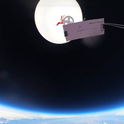Marshall Cavendish, £16.99
Bjørn Lomborg believes that the future will be far better than you are being led to believe. You can't fault his ambition, or his perseverance. But his book is a concoction of selectively presented facts which fails to address the real challenge posed by climate change.
The past two years have seen an extraordinary shift in public debates on this issue. Reports from the intergovernmental panel on climate change (IPCC) set out unequivocal evidence on the realities of human-induced global warming. Last year, a report by Nicholas Stern for the British government argued forcefully that the human, social and economic costs of failing to tackle climate change will heavily outweigh the costs of greenhouse gas mitigation. With governments preparing for a critical meeting in Bali at the end of this year on the future of the Kyoto protocol, the momentum is gathering pace.
Cool It challenges most of the foundations underpinning the climate change consensus. Lomborg, an adjunct professor at the Copenhagen Business School, sets the scene by cautioning his readers against "vastly exaggerated and emotional claims," he then proceeds to vastly understate the scale of the climate change problem.
To be fair to Lomborg, he does not deny that climate change is happening, or that even moderate warming could cause problems. However, he encourages us to look on the bright side. True, heatwaves may claim a few more lives in Europe and the US, but warmer weather will avert a far greater number of winter deaths. Glacial melting in the Himalayas and elsewhere is presented not as a threat but as a boon for irrigation systems, because it will generate more water. Rising sea levels will be a minor irritant. But with modest public investment, "we will essentially have no people flooded by 2085." The Thames barrier is cited as an example of how to adapt. The accelerated break-up of the great ice sheets of Greenland and Antarctica? Yet another example of climate change scaremongering, according to Lomborg. He assures us that "all models" predict an increase in Antarctic ice mass, with only minor losses in Greenland.
Lomborg has harsh words for the Stern review. Rejecting the argument that climate change mitigation is a good investment, he offers his own cost-benefit analysis, which concludes that any damage from climate change will be vastly outweighed by the costs of mitigation. Far better, he says, to adapt to global warming today and let richer future generations tackle mitigation. Meanwhile, we can deal with more pressing problems, like improving access to clean water, HIV/Aids, malaria, and illiteracy.
One of the difficulties with Lomborg's account is his cavalier approach to scientific evidence. Consider his proposition that the "standard" IPCC scenarios point to a 21st-century climate change of less than 2.6°C. In fact, the IPCC does not have a standard scenario. It sets out a range of scenarios for temperature increases linked to greenhouse gas stabilisation levels. Lomborg presents the lower end of the range as a fact, omitting to tell his readers that temperature increases of 4°C are equally plausible, or that on current greenhouse gas emission trends by 2040 the world will be locked into future temperature increases in excess of 6°C.
What of the claim that rising sea levels, glacial retreat and the break-up of the world's great ice sheets are minor threats? Here, too, Lomborg repeatedly cites IPCC authority but misleads his readers. He advises us that the IPCC anticipates modest melting of the ice mass in Greenland and a probable expansion in the Antarctic peninsula. In fact, the IPCC warns that understanding of the dynamics of melting processes is limited, that there is no consensus on the magnitude of melting, and that net ice loss is possible. Uncertainty is part of the equation. Lomborg's problem is that he uses uncertainty to select the most benign interpretation and hold it up as evidence that climate change threats are exaggerated, while ignoring the fact that uncertainty cuts two ways: things can end up worse than you anticipated.
The possible collapse of the west Antarctic ice sheet is one of the most terrifying possible consequences of global warming. This is a body of ice that rests on the bottom of the sea and rises a kilometre or two above sea level. It is not floating ice (which does nothing to sea levels when it melts) and there is enough of it above sea level to increase sea levels by some 20 feet if it were absorbed into oceans.

In many respects, the most worrying aspect of Lomborg's book is his treatment of developing countries. He starts by asking a perfectly reasonable question: why invest billions in a low-carbon transition for tomorrow when people are suffering from malnutrition, avoidable sickness and insufficient educational opportunity today? But his answer betrays a misunderstanding of the interaction between climate change and poverty.
For millions of the world's poorest people, global warming is not a future scenario. It is happening today. We may not be able to attribute specific events to climate change, but we know that it is associated with increased exposure to drought in sub-Saharan Africa, more intense tropical storms that cause flooding in low-lying coastal areas, mudslides and destruction in urban slums, and increased stress on ecological systems. And we know that these impacts will increase over time, even if we still lack a clear understanding of future timing and location.
This is another area in which uncertainty is a weak pretext for inaction. Detailed research in dryland areas of sub-Saharan Africa points to the potential for productivity losses in excess of 40 per cent by 2060. In a region where livelihoods depend on agriculture, and where one in two already live in poverty, this is a prescription for catastrophic setbacks in human development. Increased exposure to coastal flooding in the Mekong delta region of Vietnam and the Ganges delta in Bangladesh could have similarly disastrous consequences.
We already live in a deeply unequal world. If we follow Lomborg's prescription, the planet will become hotter—and more divided. The residents of London and lower Manhattan may be able to adapt to climate change behind multibillion-dollar flood defence systems, at least for a couple of generations. Farmers on Ethiopia's eastern highlands, or slum dwellers in Manila, will not be so lucky.
Scepticism has a role to play in informing any debate. The problem with Lomborg's book is that, subtitle notwithstanding, it has nothing to do with informed scepticism and is not a guide to global warming.











